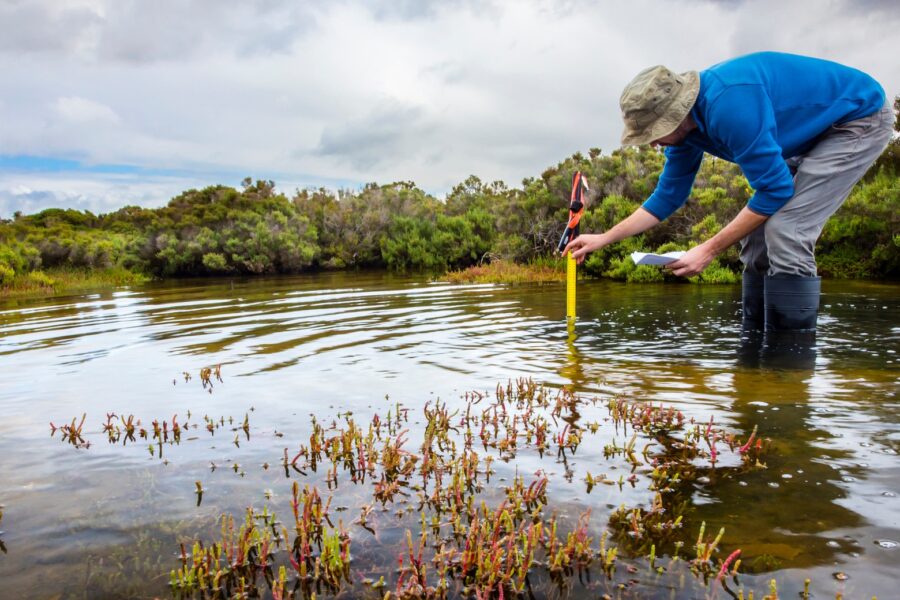During the pandemic, many classes across Antioch shifted online. This could have resulted in a reduced learning experience, but in many cases it instead created opportunities for instructors and program administrators to reevaluate and rethink how education works—and what might be possible. One of the biggest and most hopeful developments at Antioch is the expansion of online and low-residency programs, which build on the University’s 170-year history as an institution devoted to innovation and expanding access to education. Foremost among these new programs is one that launched this last year: the low-residency Master of Arts in Clinical Psychology degree offered by Antioch Los Angeles.
Mark Hower, the Provost of Antioch Los Angeles, explains that the pandemic “allowed us—or required us—to think a little differently about what delivering a quality education means.” These new offerings tie into the larger legacy of Antioch “pushing the envelope of higher education in very important ways.” Perhaps most importantly, the low-residency model has the potential to reach new learners that might not otherwise be able to access a master’s program, says Hower. “It’s an option that opens up not just geography, but time and space in a really powerful way.”
The full residency Master of Arts in Clinical Psychology (MAP) programs at Antioch Los Angeles and Antioch Santa Barbara are consistently in high demand, often with more students wanting to attend than there are openings. With the addition of this low-residency program, the University hopes to meet some of this demand.
A Program Tailored to Student Needs
The past year-and-a-half has been an incubation period for the low-residency model, says Stephen Southern, the Chair of the Low-Residency Master of Arts in Clinical Psychology. There has historically been some bias against online learning, but this comes mostly from those who haven’t yet experienced it. In his experience, the new model has allowed students to shine. It is “a strengths-oriented approach,” he says, one that allows learners time to reflect and communicate at their own pace.
Students in the program study the importance of genuine relationships between clients and practitioners. Through clinic hours and classes, with a broad range of focus from adolescent development to aging, and from human sexuality to addiction studies, students prepare to support clients’ mental health with a nuanced lens. Graduates leave the program ready to apply for licensure in the state of California—and to carry a social justice framework into clinical practice.
In designing a low-residency program, Southern and Hower worked to find best practices in virtual classrooms. Through conversations and focus groups, they got feedback from existing students about what they liked and disliked. This helped shape everything from class length to expectations around engagement from faculty.
Southern is committed to continuing to meet the needs of students and believes it enriches the program overall. He explains, “We’re not only learning material together, but I think we’re breaking new ground. We form active learning communities, not passive listening environments”
One innovation in online classrooms is discussion boards. In one example, students created a stop-motion video of teddy bears playing different scenes, demonstrating family therapy techniques. These kinds of creative options allow learners to express their strengths, while recorded lectures and interactive discussion boards provide flexible scheduling for when students engage with material.
The program’s administrators have found that in online learning, students often feel more comfortable asking faculty for guidance—or simply to reach out for conversation. This increased one-on-one time is a simple but profound benefit. As Hower explains, “One of the great advantages of a low residency model, in addition to allowing a greater reach, is people don’t have to be determined to get in the car and fight traffic to come to class.”
Opportunities for Specialization
The program offers two tracks for specialization: one in “Addiction and Recovery” and another in “General Practice.” Although the low-residency program at present doesn’t offer as many specializations as the in-person MAP at Antioch Los Angeles, Southern hopes to expand future options.
The “Addiction and Recovery Specialization” focuses on concurrent treatment methods that emphasize care for both the behavior of the client as well as the underlying trauma that often causes addiction disorders.
The “General Practice Specialization” offers another way for learners to shape the program to fit their needs. In this specialization, students have the opportunity to take electives outside of the Clinical Psychology program. One example from this year was a group of five students who wanted to study for the Women in Leadership Certificate offered by the Graduate School of Leadership and Change. This kind of specialized study offers important opportunities for students to prepare for the careers they want. As Southern says, “We can create these electives that immediately address students’ need for developing a niche and unique practice.”
A Unique Program
Hower says that what most distinguishes Antioch’s program is its deep commitment to social justice. He has worked and studied in the Antioch community for almost two decades, and he loves how he hears the same themes come up in conversations, no matter the campus, program, or delivery method. “Almost within the second you arrive, you start hearing people putting values of social justice first,” he says, “because there are certain things about our values—what we represent, what we’re trying to do in the world, and how we’re trying to engage with our students—that unify us.”
This holds true for the new low-residency program. “That underlying purpose, to help make the world a better place to contribute to a community and to individual growth,” is unique to Antioch, says Hower. He believes that students can be met where they are by increasing access and recognizing the ways learners come into the program with many responsibilities. By breaking down barriers found in traditional graduate education models, Hower says that “different communities, different experiences, different students come into play.” To build a thriving community, everyone needs to prioritize hearing different perspectives and be “engaging with them meaningfully.”
Southern expands on this. “We can really respond to a person’s life-career needs,” he says. “And that would include balancing their education with their work, family life, any health-related concerns they may have, as well as recreation and travel.”



